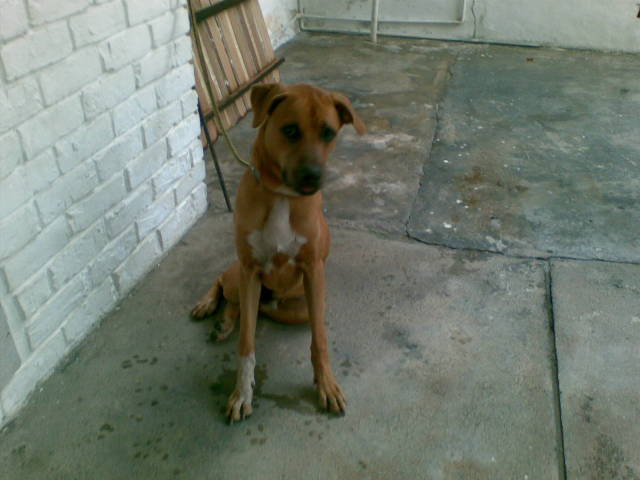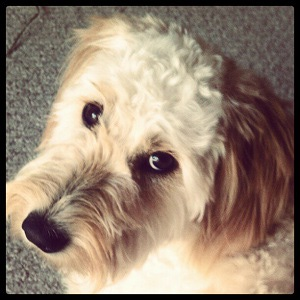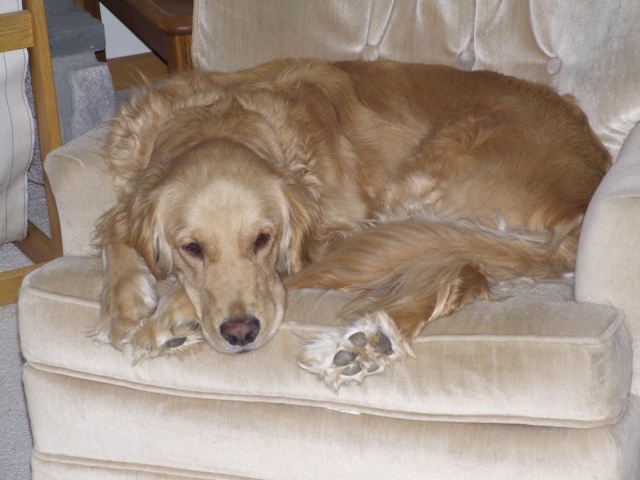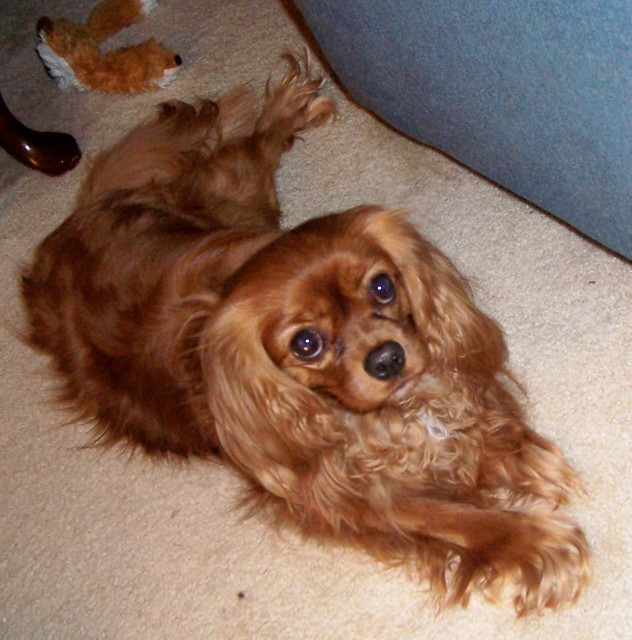Question
 my sweetheart , Riley
my sweetheart , Riley
hi I have a 6month old golden who from the day we got him was the sweetest,calmest,most obedient pup ever,Iwas amased at how good he was,we crated him at nights only,he was great with house breaking,some accidents still happen butabout 3wks ago we noticed his playing was getting much rougher,his play bitting became to hard,when i tried to tell him NO he jumped up at meto continue bitting or should i say chewing that too he chews everything,we gave him bones,toys,still chews,whenwe walk him he jumps at the leash,pulls when walking he never did these things so I had him nuetered last week thinking that would calm him down,nope not yet anyway.he seems to be testing us.I have wanted a golden all my life,I love him so much and I want him to be behaved like he used to be.please help asap. linda
AnswerSome of this may be testosterone related. It will take about four months for testosterone levels to minimize following neutering.
To treat this developing problem, do NOT play "rough" with this dog for any reason; rough play teaches a dog how to use aggression/strength against humans (this includes growling and inappropriate nipping.) Play is rank related behavior, even in domestic dogs; dogs play to socially interact, but that social interaction is about strength and tenacity, all rank behaviors. Your dog has apparently escalated (because he is WINNING when playing with you) and is now demonstrating subsequent anxiety (chewing). NO DOG can be "leader" of a human "pack", and all rank opportunists (those dogs who attempt to do so because of inadequate human management) develop neurotic, and sometimes aggressive, behaviors.
Here's what you need to do: When your dog exhibits ANY jumping up/biting behavior, TURN YOUR BACK, no matter if he follows you around and attempts to jump up again; KEEP turning your back to him. If this does not extinguish his behavior, LEAVE THE ROOM, put a CLOSED DOOR between you and the dog; count to ten, go back and try again. If the dog nips at your hands, SQUEAL (and show pain, put your head down and turn away for a second). He's still young enough to respond to this demonstration of pain. LEARN about POSITIVE REINFORCEMENT TRAINING NOW (go to Karen Pryor's web site and read Patricia McConnell Ph.D.'s book on this topic, available on Amazon). Teach this dog ONE BEHAVIOR ("Sit", but use a unique word), which will take approximately three to four days of multiple, SHORT sessions. BE SURE the dog can perform this behavior 100% of the time (for reward/praise), and then ASK the dog to perform the behavior BEFORE interacting with him FOR ANY REASON: play, affection, attention of any sort, being fed, being taken/let out/in, etc., for at least TWO MONTHS. This is a "nothing in life is free" regimen and it will put him back in his "place." If the dog sleeps with you, REMOVE HIM from your bedroom for at least two months. Give him a soft bed in a confined area (like the kitchen.) DO NOT RESPOND to any whining, crying, barking during the night; if you must spend one or two sleepless nights, do it. DO NOT substitute any dog toy or chew toy for any object he inappropriately obtains. INSTEAD, leave the room immediately if you see him with an inappropriate object. He WILL eventually follow you; you may be inadvertently training him to take inappropriate objects by giving him too much attention when he does it. If you have to, set the dog up by leaving such an inappropriate object (like old TV remote) so he can take it and YOU can LEAVE; as long as the dog has the object, remove yourself from the room, even if he has to follow you around the house for a while. He will LEARN that having an inappropriate object means YOU will IGNORE him. Have patience; this technique WORKS.
Regarding his pulling on leash: purchase a Halti or Gentle leader; use this with its own leash and with his normal BUCKLE AROUND (NOT CHOKER) collar with ITS own leash. Start the dog in the back yard. Go forward, then reverse direction suddenly, using the head collar to GENTLY change his direction; the moment he changes direction, go back to the neck collar/lead and pop a treat in his mouth. pretend you are walking in the rungs of a ladder and OFTEN change direction and ASSOCIATE a phrase with EVERY CHANGE of direction ("Come along"); each time he changes WITH you, pop a treat into his mouth (very very small tidbit of chicken frank or cheese.) Changing direction often accelerates the dog's learning to follow the head collar. Once he has performed change of direction easily, take the head collar (and of course neck collar, both with individual leads) onto the street. Use it exactly the same way there; if he PULLS, change direction QUICKLY and once he has restored to your side, treat/praise. Keep using your "come along" phrase and he will acquire a strong conditioned response to it: "come along" means follow "mom" or "dad" and get a TREAT. He will soon be easily manageable without the head collar. Any further questions, please repost.


 dogs behaviour
QuestionMy 8 months old Dusto
QUESTION: My puppy
dogs behaviour
QuestionMy 8 months old Dusto
QUESTION: My puppy
 Agressive 1 yr old mini goldendoodle
Question
our millie
My husband and I got our min
Agressive 1 yr old mini goldendoodle
Question
our millie
My husband and I got our min
 uncontrollable beagle
Question
max
My beagle is a year and a half. Ive had hi
uncontrollable beagle
Question
max
My beagle is a year and a half. Ive had hi
 aggression in aging dog
Question
Niko
I have a thirteen year old, female, Samoy
aggression in aging dog
Question
Niko
I have a thirteen year old, female, Samoy
 Dog light and shadow chasing
Question
Jenni
My 3 year old Cavalier King Charles Span
Dog light and shadow chasing
Question
Jenni
My 3 year old Cavalier King Charles Span